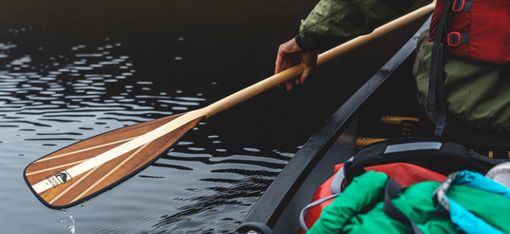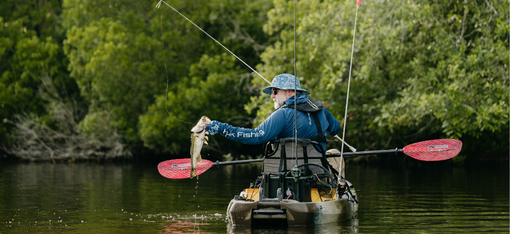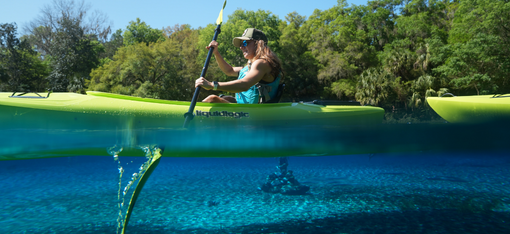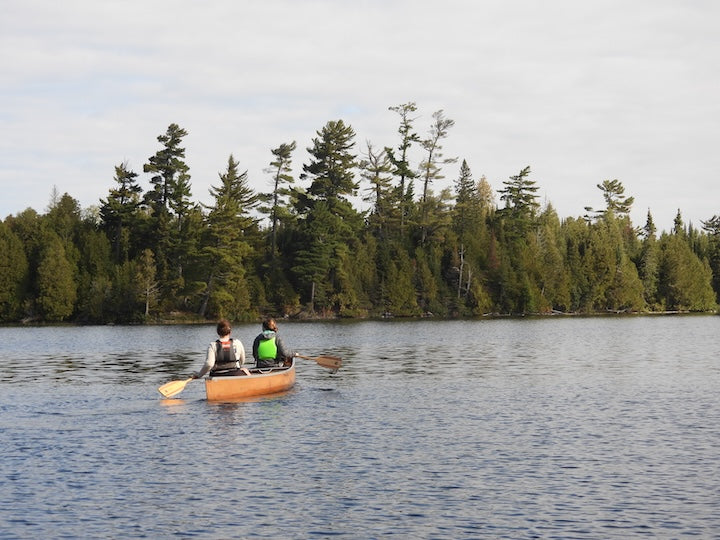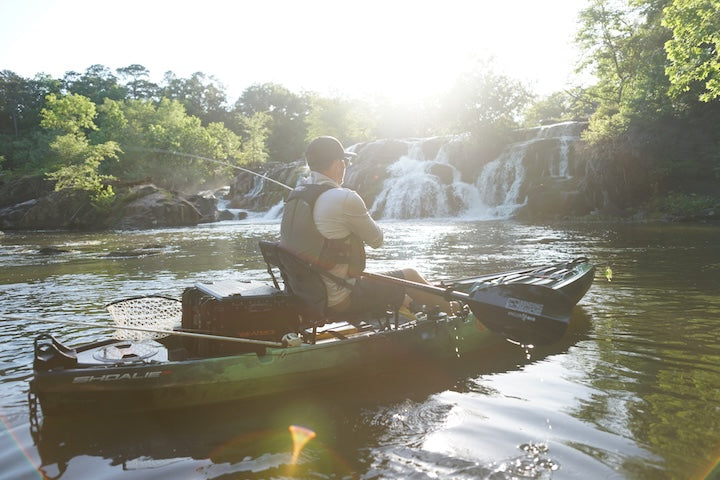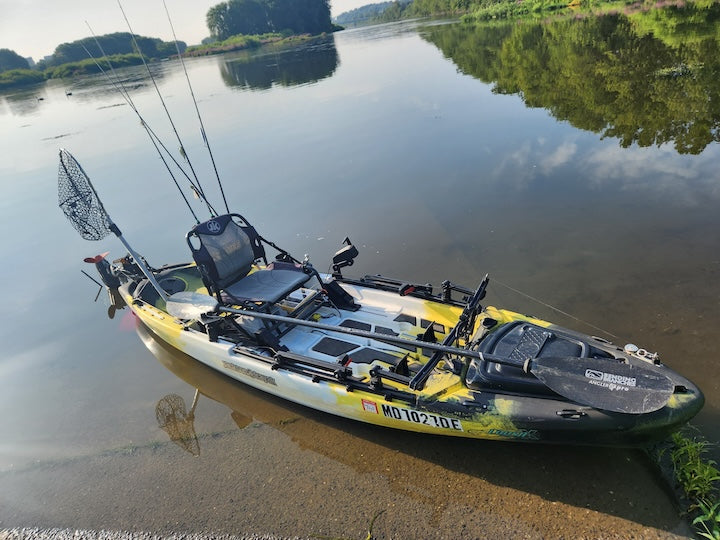A Canoe Trip in the Heart of the Scottish Highlands

Photographer Ian Finch and his buddy, Jamie Barnes, recently embarked on a canoe trip into the heart of the Scottish Highlands. Upon their return, Ian told us about their trip and shared with us some of his gorgeous pictures.
Here’s our conversation with Ian:
BB: Tell us a little about yourself and how you got into canoeing.
IAN: I grew up in a house surrounded by Native American arrow heads, Inuit artifacts and archaeological books. I would read and be fascinated by the deep connection Native people had to nature and also how beautiful their regalia and belongings were.
One of the things that gripped me was the incredible work and skill with local birch bark or cedar. After looking into the craft deeper I fell in love with the lengthy and incredible skill it took to shape bark, whilst also learning to respect the lineage of knowledge that had been passed down with this vital skillset.
I researched and fell in love with birch bark canoes, reading in depth about this vital local asset on the super highways of rivers throughout North America and Canada.
 Ian Finch, photographer and canoeist
Ian Finch, photographer and canoeist
Five years ago I fed that passion and began to take canoe lessons on local rivers and lakes and learning the art of canoeing.
A few years ago I decided to combine my love for the craft, fascination with wild places, Native people and storytelling by putting together an expedition to descend 2,000 miles of the Yukon River in Canada and Alaska with three teammates. This journey took three months of continuous paddling and immense logistics and prep. We finished in western Alaska where the river’s mouth spilled out 85 miles from Russia.
Since then I've paddled on the Ohio River, Mississippi, Tennessee, and some wild Scottish and tamer UK waters.
Canoeing for me is about slowing down to the pace of nature to look more, to learn more.
BB: Was this your first canoe trip in the Scottish Highlands? Why did you choose this location?
IAN: This was my second journey in Scotland by canoe. The first was cut short by a violent weather front called Storm Caroline back in October 2019.
This new journey was to break into the heart of the Scottish Highlands by paddling one of the country’s most beautiful and formidable lochs, Loch Maree, then portage over a mountain track to another series of lochs in one of the remotest points in mainland UK.

The region we aimed for takes at least two days to get to by foot. It’s incredibly remote and is why we chose to get there by paddle and a lengthy portage. The lochs in this area are known for their remoteness and isolation. They are also known for their winds and tricky weather due to the geographic placement so close to the coast and along a southeast to northwest axis.
BB: Did you have a specific purpose for the trip?
IAN: The trip was initially all about adventure in the framework of a previously unpaddled region for us both. The pandemic and resulting national lockdowns had thwarted our attempts two or three times.
When the time came for us to go, we'd endured nearly six months of restrictions to our lives and lack of ability to get out into wild places. The release and escape into this region couldn't have come sooner.
In today’s world these quiet, wild places are hard to come by, especially in the UK. They can be found and enjoyed, yet require good planning and hard work to get to. That’s what makes them extra special.
The fact that it came at a hard time in our lives ensured this journey was not only about adventure but about our reconnection to nature after a long and challenging year.

BB: What was the highlight of this trip for you?
IAN: Highlights on expeditions come in many forms. Landscape, adventure and experiences vary on journeys like this.
We uncovered forested islands once visited by Queen Victoria, saw thunderous fighter jets pass low over head, and paddled into one of the remotest mountain ranges in the region in dangerous conditions.
I have to say that one of my personal highlights was our first island campsite on Loch Maree. Waters were mirror-glass calm, we paddled onto a small secluded beach and set up our primitive camp on the sand. We tracked stag prints (male deer) into the heart of the island and returned to create a fire by the waters edge. No other humans were to be seen for days.
In the morning, skies and waters were dead calm and wrapped in the most saturated purple and pink I'd ever seen. Moments like this cannot be replicated, just taken in and stored somewhere in the heart.

BB: What challenges did you face?
IAN: Weather is always a challenge when canoeing. Your expeditions are dictated by everything wind and weather-based and the planning has to account for that in high detail.
Our greatest challenge came three days in when we had miles left to paddle on a loch into sideways wind to reach our final destination of the day. We had an hour of daylight left, yet as the winds increased we had to make a difficult decision: Make a break for land and pull the canoe across and over the coastline to where our shelter would be? Or camp on the side of the wind-ravaged loch?
Once on land, we tried to pull the canoe. But with the weight of our equipment transferred onto our shoulders in packs, we could only pull the canoe some 400 yards over the rugged geography.
In the fading light we made the decision to hide the canoe and make a break for the shelter on foot, and return for the canoe when weather permitted.
We were completely on our own. That night we navigated in the dark without trails along the undulating coastline, arriving late into the night to our shelter. It took two days to get back to the canoe once the heavy weather front had passed. We continued on in still far from ideal conditions.

BB: If some of our readers are inspired to plan a canoe trip there, too, what would they need to know?
IAN: Canoeing in Scotland can offer some of the most remote and geographically beautiful terrain anywhere the world, in my opinion. Because of its position in the northwest of the UK it's often a breezy and difficult place to negotiate on water. Yet, when conditions allow, it is utterly breathtaking.
Rivers feed into lochs, lochs sweep into the sea. Wildlife varies from whales, seals, deer and eagles. Mountains reach from the seas to summits.
The northwest Highlands is where you want to be for the remotest waters. A huge network of lochs and connecting rivers mean that, with a portage or two, you can connect your paddling locations together like a wonderful geographic puzzle of adventure.
In the UK we have free-use stone shelters called "bothies" which are old roofed buildings once frequented by cattle herders. These are located in some of the remotest regions and can be used without fee or reservation throughout Scotland. They are managed by an official association, so are well maintained in most cases.
By adding these to your expedition you can be assured you’ll have a fire and good overall shelter to shield you from the famous Scottish weather.

Watch Jamie Barnes' film of their trip here.
All photos courtesy of Ian Finch. To see more of Ian’s photography, check out his website, and follow him on Instagram and Twitter.
Need help choosing a canoe paddle? Contact our Wisconsin-based Customer Service team today: 715-755-3405 • [email protected]
More for you...




